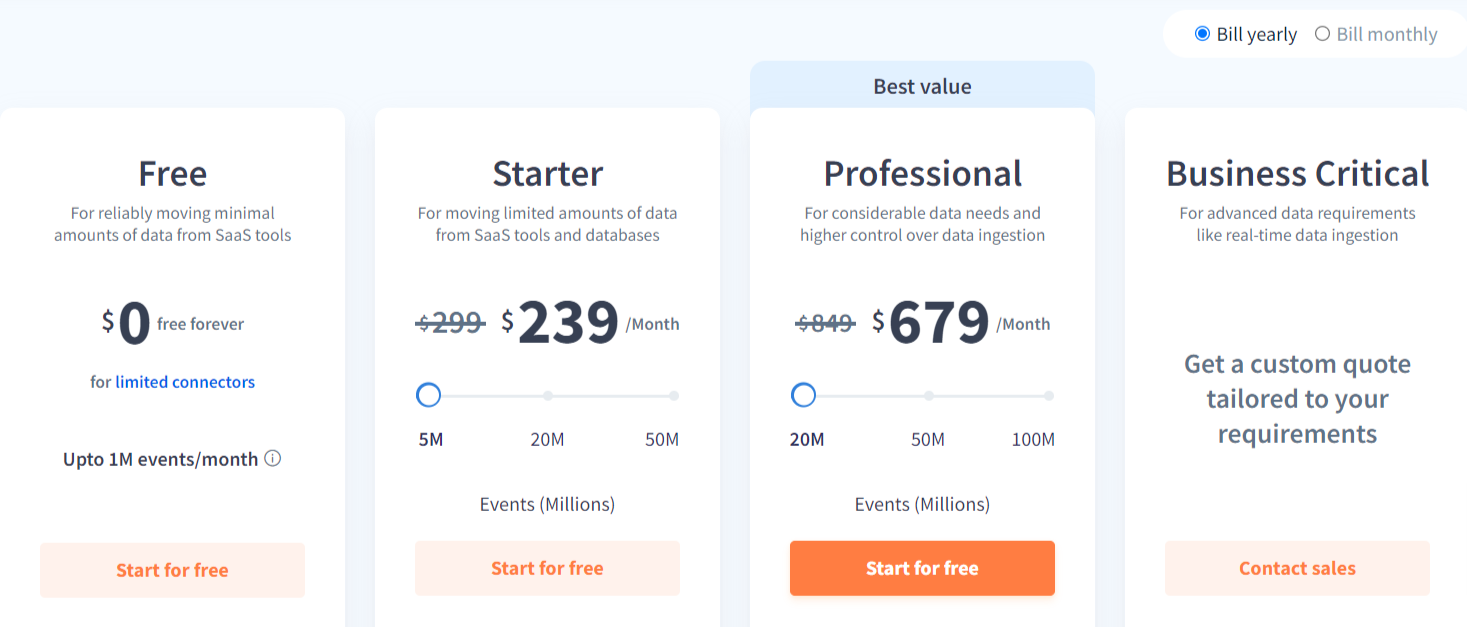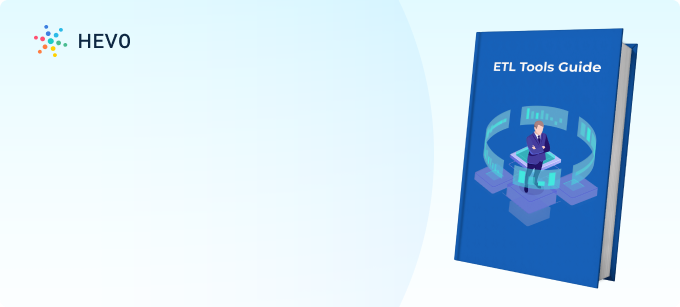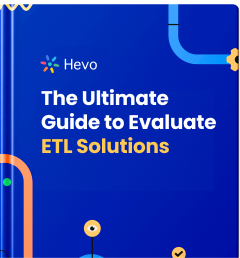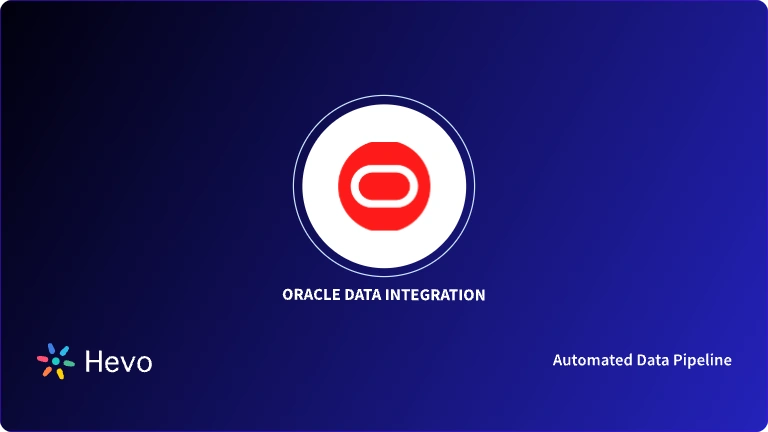 Key Takeaways
Key TakeawaysOracle replication tools are designed to create and manage copies of Oracle databases for purposes such as disaster recovery, high availability, and data distribution.
These tools fall into two main categories: built-in features within the Oracle database and third-party tools that provide advanced replication capabilities.
Top 5 Oracle replication tools include: Hevo Data, Carbonite Availability, Quest Shareplex, Oracle GoldenGate and IBM InfoSphere Change Data Capture.
As businesses collect more data, the need for tools to help manage this data also increases. Most businesses’ primary requirement for managing data is a tool that can seamlessly replicate the high volume of data collected from numerous sources. This replication is important as it can help ensure that the data is always available and not too much load is put on a single Database Server.
There are a diverse set of data replication tools available in the market that can be used by businesses to replicate data. This article will provide you with an in-depth understanding of the various Oracle Replication tools available in the market.
Table of Contents
What is Oracle?
Oracle is a Relational Database Management System (RDBMS) from Oracle Corporation. Oracle’s RDBMS is a multi-model system, that was primarily designed for Data Warehousing and Enterprise Grid Computing. It is now the database of choice for almost all Enterprises due to its cost-effective solution for data management. Oracle houses support for Structured Query Language (SQL), allowing users to easily interact with the database.
Key Features of Oracle
- Client/Server Architecture: Oracle is based on Distributed Systems that have the same degree of data consistency and transparency as any Non-distributed Systems along with all advantages of a local Database Management System. Hence, Oracle allows processing to be split into Client and Server application programs.
- Portability: Any application built on Oracle can easily be ported to work on a wide variety of Operating Systems without making any changes to it.
- Scalability and Performance: Oracle houses numerous features like advanced portability and real application clustering that make it highly scalable. It also gives users the ability to tune the performance of their database as per requirements.
- Availability: Oracle is built on high-performing computing environments, it can be configured easily to ensure all-time Data Availability. This ensures that the data is accessible during planned, unplanned failures or downtimes.
Consider another example of Oracle database replication to reduce latency. Usually you can experience latency while transferring money or during ATM withdrawals. For example, when you withdraw $150 from an ATM, the transaction is immediately copied to all your bank’s servers. It updates the information in all branches, displaying $150 less in your account.
Say goodbye to manual coding for your data pipelines and embrace Hevo’s No-Code, Fully Automated ETL solution. With Hevo, you can effortlessly replicate data from over 150 ready-to-use integrations, including Oracle, to any target warehouse or database.
Setting up data pipelines with Hevo is a simple three-step process: select the data source, provide valid credentials, and choose the destination.
Trust Hevo for your data replication process for a hassle-free experience. This will enable you to spend more time on data analysis and less time on data aggregation.
Get Started with Hevo for FreeWhat is Data Replication?
Data Replication can be defined as the process of making copies of data and storing them in databases across different locations in order to improve their overall accessibility and performance. In simple terms, it can be said that it is the process of copying data stored in a database from one Server to another, ensuring high availability so that all the users can access the same data without facing any consistency issues or putting too much data load on a single Server.
This results in the formation of a Distributed Database setup in which users can access data relevant to their requirements seamlessly. The replicated database is updated and synchronized with the source on a regular basis to ensure that the data is consistent across all its replications.
The Benefits of Data Replication
The key benefits of implementing Data Replication are as follows:
- Improved Data Availability: Data Replication improves the reliability and resilience of databases by storing the same data across multiple Nodes in the network. This means that if one Node goes down due to glitches or for maintenance, the data stored in it can still be accessed from a different Node.
- Increase in Data Access Speed: If a lot of users are trying to access the data stored on a single database, users might face some latency due to the high load on the database. Another situation in which users might face high latency would be when they’re trying to access data stored in a single database from different parts of the world. If the data has been replicated on their user’s local Servers, the issue of high latency would be resolved.
- Improved Server Performance: Data Replication significantly improves the performance of the Server by dispersing its load across various Nodes, thereby improving the overall network performance.
- Data Recovery: Data Replication facilitates the recovery of corrupted or lost data by maintaining accurate backups across numerous well-monitored locations.
Top 5 Oracle Replication Tools
The top 5 Oracle database replication tools are as follows:
- Hevo Data
- Carbonite Availability
- Quest Shareplex
- Oracle GoldenGate
- IBM InfoSphere Change Data Capture
1. Hevo Data
Rating: 4.3(G2)
Hevo Data, a No-code Data Pipeline reliably replicates data from any data source with zero maintenance. You can get started with Hevo’s 14-day Free Trial and instantly move data from 150+ pre-built integrations comprising a wide range of SaaS apps and databases. What’s more – our 24X7 customer support will help you unblock any pipeline issues in real-time.
With Hevo, fuel your analytics by not just loading data into Warehouse but also enriching it with in-built no-code transformations. Its fault-tolerant architecture ensures that the data is handled in a secure, consistent manner with zero data loss.
Hevo is very flexible compared to other tools we evaluated. It allows us to handle all exceptions and custom use cases effortlessly.
– Chushul Suri, Head Of Data Analytics, Meesho
Key features of Hevo that makes it an amazing as an Oracle database replication tool
- Near Real-Time Replication: Get access to near real-time replication on All Plans. Near Real-time via pipeline prioritization for Database Sources. For SaaS Sources, near real-time replication depend on API call limits.
- In-built Transformations: Format your data on the fly with Hevo’s preload transformations using either the drag-and-drop interface or our nifty python interface. Generate analysis-ready data in your warehouse using Hevo’s Postload Transformation.
- Monitoring and Observability: Monitor pipeline health with intuitive dashboards that reveal every stat of pipeline and data flow. Bring real-time visibility into your ETL with Alerts and Activity Logs.
- Reliability at Scale: With Hevo, you get a world-class fault-tolerant architecture that scales with zero data loss and low latency.
Hevo Data Pricing
Hevo provides Transparent Pricing to bring complete visibility to your ETL spend.

Stay in control with spend alerts and configurable credit limits for unforeseen spikes in the data flow.
2. Carbonite Availability
Rating: 4.1(G2)
Carbonite Availability is one of the data replication tools for Oracle that ensures that crucial systems of any business are accessible to all necessary users and applications that depend on them at all times. This software keeps all critical business systems available at all times and prevents data loss on Linux and Windows Servers. It houses a continuous replication technology, that is capable of maintaining an up-to-date copy of the operating business environment without putting too much load on the primary system or network bandwidth.
Key Features of Carbonite Availability
- Continuous Data Replication.
- Recovery times of minutes for failures.
- Supports Data Replication between disparate Physical, Virtual, and Cloud-based Systems.
- Establishes multiple recovery points by maintaining historical snapshots.
- Houses advanced features like encryption in-flight, compression, and bandwidth throttling.
- Robust APIs and SDKs that enable easy automation and integration.
Carbonite Availability Pricing
Carbonite does not follow a transparent pricing model for its Data Replication offering and the final price depends on the requirements and infrastructure.
More information on Carbonite can be found here.

3. Quest Shareplex
Rating: 4.3(G2)
Quest Shareplex is a popular Oracle Database Replication software that can ensure high Availability, Scalability, and Reporting. With Quest SharePlex, users can replicate Oracle data to another Oracle Database, in SQL Server, or Kafka.
Key Features of Quest Shareplex
- Simplicity: Users can seamlessly install and use Quest SharePlex in minutes. It can then be used to easily execute near-real-time Data Replication and ensure scalability and high availability. Quest SharePlex also builds the target database automatically, eliminating the need for users to have deep expertise and perform various tasks manually.
- Data Accuracy: Quest Shareplex avoids any data loss while replicating using its built-in monitoring, data comparison, conflict resolution, and synchronization mechanisms.
- Quality Support: All Quest Shareplex subscriptions come with one year of free business-critical support. A good quality customer service is provided to all users by highly skilled support engineers who have years of Quest SharePlex experience, and hence, all issues are resolved immediately, saving a lot of time.
Quest Shareplex Pricing
Quest Shareplex does not follow a transparent pricing model and the final price depends on your business and data requirements which can be finalized after a discussion with the sales team at Quest.
4. Oracle GoldenGate
Rating: 3.9(G2)
GoldenGate is a product by Oracle that gives businesses the ability to replicate, filter, and transform data from one Oracle database to another supported heterogeneous database. This tool is capable of replicating data 6 times faster than other traditional data movement solutions and ensures high availability, disaster recovery, and zero downtime migrations.
Key Features of using Oracle GoldenGate
- All movement of data takes place in real-time and with significantly reduced latency.
- Ensures consistency and improved performance by only replicating committed transactions only.
- A wide variety of Oracle database versions are supported, along with numerous heterogeneous databases that are running on different Operating Systems.
- It uses a simple architecture that is easy to configure.
- It provides high performance and puts minimal load on the underlying databases and infrastructure.
Oracle GoldenGate Pricing
The pricing for Oracle GoldenGate is based on the type of usage as well as the actual requirement. With a wide range of pricing plans, Golden Gate pricing starts at $350 per user license with an additional cost of $77 for the software update, license, and support.
5. IBM InfoSphere Change Data Capture
Rating: 4.8(G2)
InfoSphere CDC is IBM’s Data Replication solution that is capable of capturing database changes as they happen and replicate those changes in target databases accordingly. This tool provides its users with low-impact change capture and fast delivery of all data changes for key information management initiatives such as Dynamic Data Warehousing, Application Consolidations or Migrations, Master Data Management, Operational Business Intelligence, etc. The Data Replication using IBM InfoSphere CDC can be carried out continuously or periodically.
Key Features of IBM InfoSphere CDC
- Continuous Availability: It ensures high availability for transactional data stores that are used more frequently than others. It also houses support for disaster recovery and cross-site workload balancing.
- Programming-free Data Integration: IBM InfoSphere Data Replication can be used to set up integrated systems that are updated immediately as and when changes occur. This eliminates redundant data transfer and also minimizes the impact on all production systems.
- Multi-source, Target, and Replication Topology Support: IBM InfoSphere Data Replication possess capabilities that can load real-time information into an Operational Data Store or a Data Warehouse which can help organizations enhance business agility and visibility for key processes significantly.
- User Interface and APIs to Monitor and Manage: IBM InfoSphere CDC Replication Management Console houses a rich client interface that provides Access Control, Operation, Configuration, and Monitoring. The same access is also available through a Command-line Interface.
- Log-based Change Data Capture: IBM InfoSphere Data Replication software reads the native database log to capture changes instead of using triggers or running queries on the database. The Log-based Change Data Capture Approach can ensure that the performance of even some of the most demanding mission-critical applications does not get affected adversely.
IBM InfoSphere Change Data Capture Pricing
IBM does not follow a transparent pricing model for its InfoSphere CDC. The price can be finalized after a discussion with the sales team at IBM, based on data and business requirements.
Factors To Keep in Mind While Choosing An Oracle Replication Tools
Your organization’s requirements play a pivotal role in choosing a suitable replication tool for your business. Below are a few points to keep in mind before deciding on any of the Oracle replication software:
- Purpose of Replication: You should know why there is a need for replication of your data. It can be to move applications to the cloud, synchronize your data instance, do replication for real-time analysis, or seek a better hybrid cloud solution that meets your requirements. It is essential to understand the reason for choosing an Oracle replication tool that is suitable for you.
- Features that You Need: Look out for the features of the Oracle db replication tools and zero down the one that meets your needs. Analyze parameters such as the volume of data it replicates, supported data types, and data sources, along with supported data targets.
- Budget: Consider the budget that your organization has for spending on Oracle database synchronization tools. Prices and ease of use are the most important things to keep in mind before investing in any tool. There are many open source Oracle database replication tools as well. You can go for them if they cater to your needs.
You can also read about:
- Replicate Oracle data to BigQuery
- Migrate Oracle to Redshift with Hevo
- Migrate Oracle to Snowflake quickly
- Best Oracle ETL tools with features & pricing
Conclusion
This article provided you with an understanding of Data Replication along with a list of the best Oracle Replication Tools available in the market.
Although there are a wide variety of Data Replication tools available in the market, most of them are considered to be hard to understand and implement for someone with not enough technical knowledge of database systems.
Hence, businesses should consider using automated platforms like Hevo. It will make your life easier and make data migration hassle-free. It is User-Friendly, Reliable, and Secure.
Take 14-Day Full-Feature Free TrialFAQs Related to Oracle Replication Tools
1. What are the different types of replication in Oracle?
Different types of Replication in Oracle are:
1. Physical Standby Database (Data Guard)
2. Logical Standby Database
3. Snapshot Replication
4. Materialized View Replication
5. Oracle Streams
6. Oracle GoldenGate
2. What is Oracle GoldenGate?
GoldenGate is Oracle’s software solution that allows you to replicate, filter, and transform data between databases, ensuring real-time synchronization across diverse systems.
3. Does Oracle have an ETL tool?
Oracle offers an ETL tool called Oracle Data Integrator (ODI). This tool provides a comprehensive data integration platform that supports high-performance data movement and transformation among various systems.
Feel free to comment your thoughts on the Oracle replication tool in the comments!












